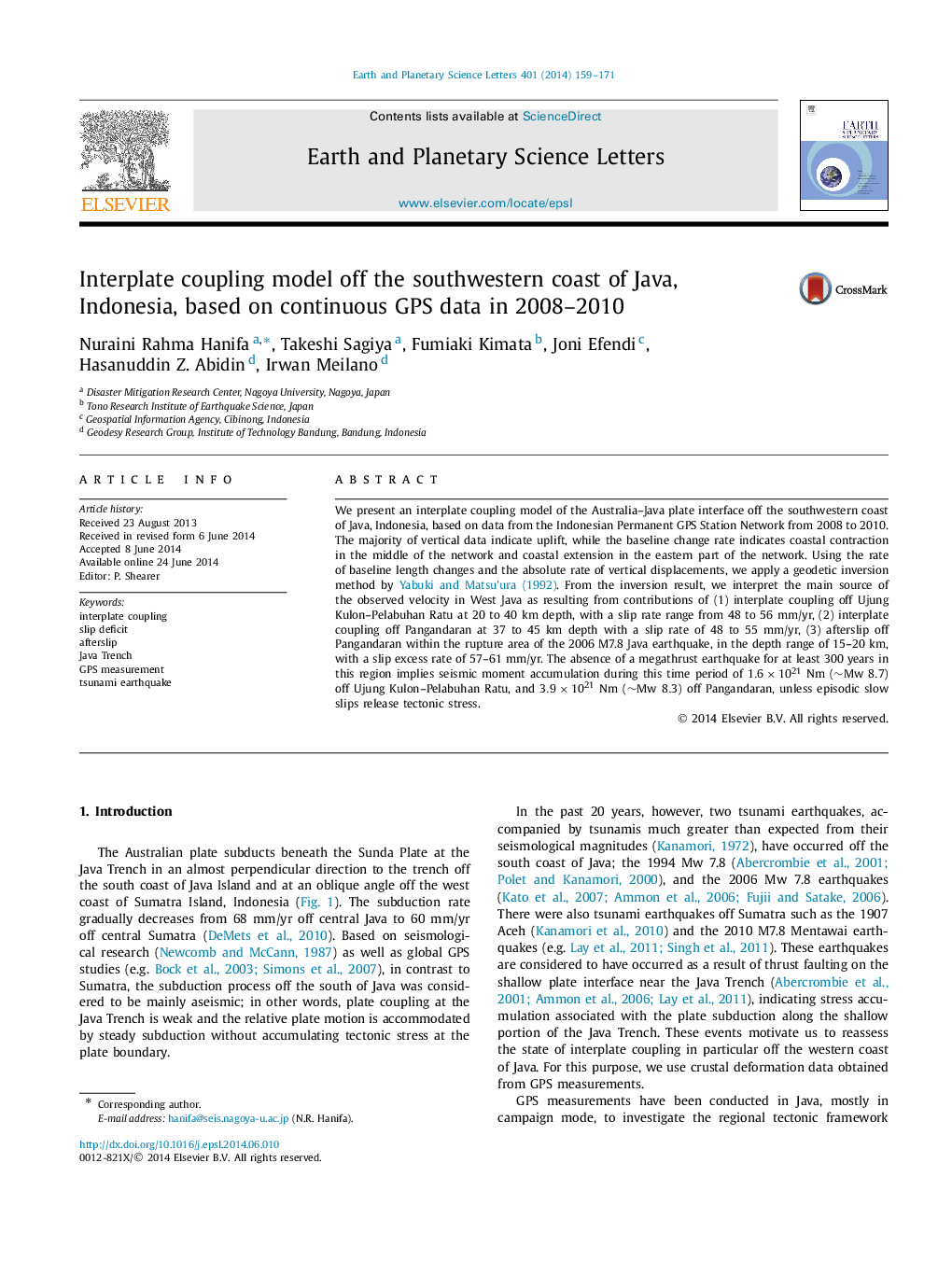| Article ID | Journal | Published Year | Pages | File Type |
|---|---|---|---|---|
| 6429191 | Earth and Planetary Science Letters | 2014 | 13 Pages |
â¢We evaluate interplate coupling off southwestern Java, by GPS data inversion.â¢Coastal contraction and coastal uplift in western Java are interpreted as slip deficit.â¢Coastal extension near Pangandaran is interpreted as afterslip.â¢Seismic moment accumulation â¼Mw8.7, unless release by episodic slow slips.
We present an interplate coupling model of the Australia-Java plate interface off the southwestern coast of Java, Indonesia, based on data from the Indonesian Permanent GPS Station Network from 2008 to 2010. The majority of vertical data indicate uplift, while the baseline change rate indicates coastal contraction in the middle of the network and coastal extension in the eastern part of the network. Using the rate of baseline length changes and the absolute rate of vertical displacements, we apply a geodetic inversion method by Yabuki and Matsu'ura (1992). From the inversion result, we interpret the main source of the observed velocity in West Java as resulting from contributions of (1) interplate coupling off Ujung Kulon-Pelabuhan Ratu at 20 to 40 km depth, with a slip rate range from 48 to 56 mm/yr, (2) interplate coupling off Pangandaran at 37 to 45 km depth with a slip rate of 48 to 55 mm/yr, (3) afterslip off Pangandaran within the rupture area of the 2006 M7.8 Java earthquake, in the depth range of 15-20 km, with a slip excess rate of 57-61 mm/yr. The absence of a megathrust earthquake for at least 300 years in this region implies seismic moment accumulation during this time period of 1.6Ã1021Nm (â¼Mw8.7) off Ujung Kulon-Pelabuhan Ratu, and 3.9Ã1021Nm (â¼Mw8.3) off Pangandaran, unless episodic slow slips release tectonic stress.
